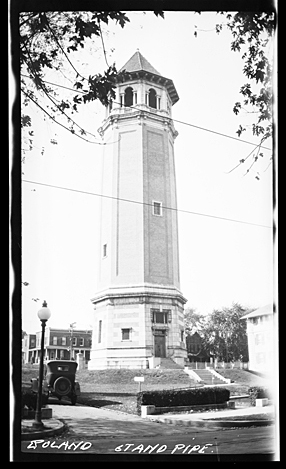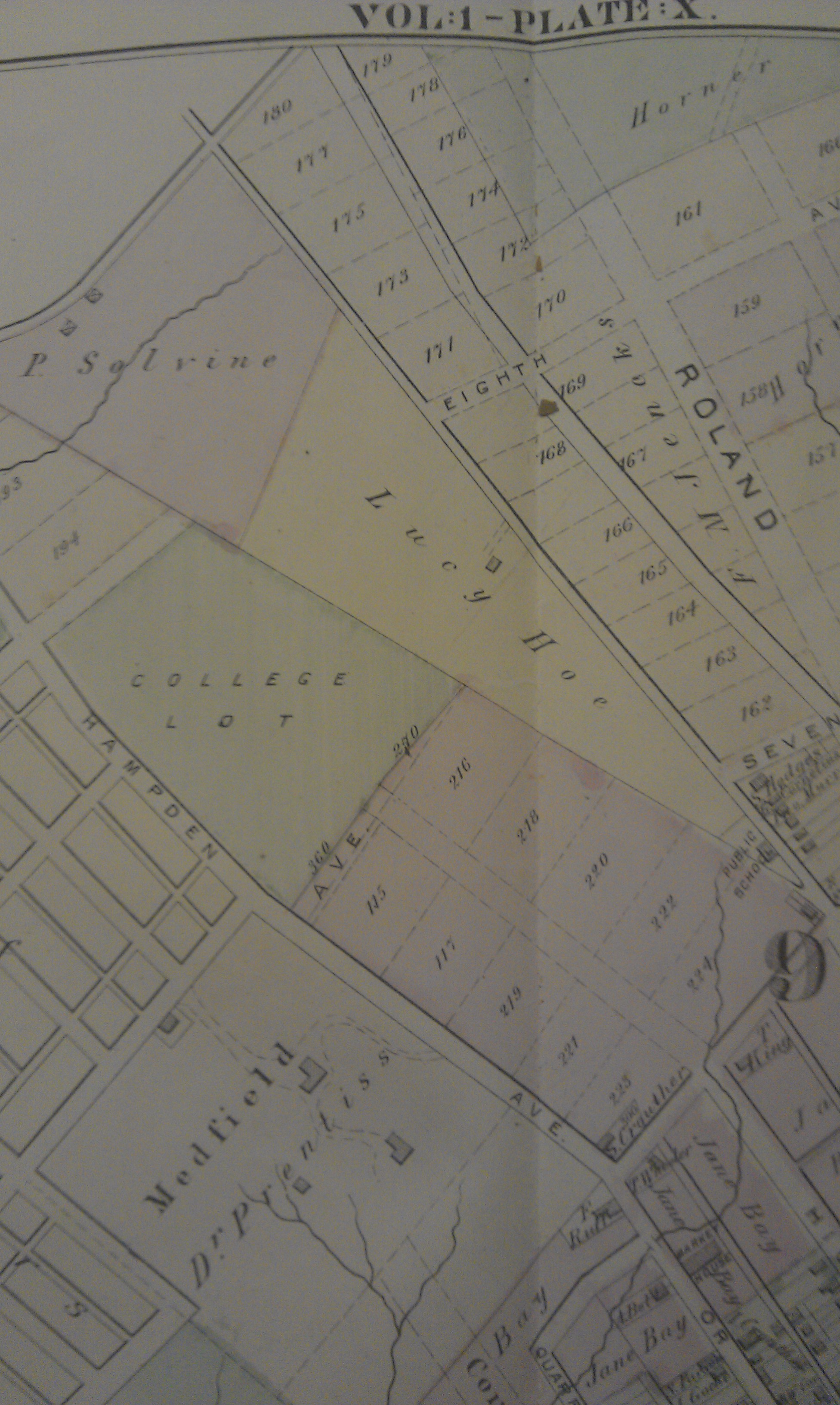A Short History of Hoes Heights

A view looking north along Evans Chapel Road and east to Roland Park. Hoes Heights. Ornamental wall. Back of Roland stand pipe, City Buildings Collection, 1926, MdHS, PP236.1771A
Ever wonder about Hoes Heights? The hidden and oft-overlooked north Baltimore neighborhood of Hoes Heights bears the name of Grandison Hoe, a freed slave in Antebellum Baltimore who once owned and operated a farm on the location. Nestled between its more renowned neighbors—Hampden to the south and Roland Park to the north— this neighborhood remained entirely African-American until the last few decades. Hoes Heights, bound by Cold Spring Lane to the north, 41st Street to the south, Falls Road to the west and Evans Chapel Road to the east, became part of Baltimore City under the 1918 Annexation Act. It is an architecturally diverse community consisting of 19th century stick style houses, turn of the century single-family homes, and brick rowhouses. Many are probably familiar with this neighborhood’s most prominent feature—the 148 foot tall water tower located on Roland Avenue near the intersection of University Parkway.

Grandison Hoe’s plot of land from J. Morris Wampler’s map of Hampden in 1857. Hampden Improvement Association map, J. Morris Wampler, 1857, MdHS, M271
The earliest reference to the Hoe property is found in an 1857 map of Hampden and its surrounding regions by J. Morris Wampler (seen to the left). The property’s boundaries terminated to the north at what is now Roland Heights Avenue and to the west along the crest of the hill that descends to Falls Road. In the 1860 census of Baltimore County, Grandison is listed as being 40 years of age with property worth $3,600 and an estate worth $200—a modest house on valuable land. Also listed as residents of the farm are his 38-year-old wife Lucy, their five children, and a man named Augustus Green. All are identified as farmers.
The history of Hoes Heights prior to 1857 is somewhat murky. Who deeded Grandison Hoe, a freed slave, this coveted piece of land? Eliza Hoe, who may have been a sister or close relative of Grandison, shows up in the 1870 census as a housekeeper for a branch of the Fendall family in Bolton Hill. This same family also owned property adjacent to Hoes Heights, which was once part of Charles Ridgley’s massive North Baltimore estate. This Hoe-Fendall connection could possibly explain how Grandison ended up with the land.
Hiram Woods (1826-1901), a local sugar refining magnate who owned land north of Cold Spring Lane, so desired Hoe’s Hill (as it was then known) that he offered several times to buy the land and resettle the Hoes in Cross Keys, a small African-American village just to the north. Woods even offered to relocate the family burial ground. The Hoes rejected the offer. (Woods’s parcel later became part of Roland Park.)
As the Hoe family grew older the need for more living quarters arose. Grandison’s two sons, William and Richard, built their own houses adjacent to their father’s. Relatives, possibly from Charles County, moved to the Hoe farm and built homes. As the 20th century approached, the occupants of Hoes Heights began shifting from farm to domestic work, earning their livings in Roland Park and other exclusive neighborhoods. The harsh circumstances of the Great Depression forced the Hoes to sell portions of their land in order to pay delinquent tax bills. As a result, several blocks of small brick rowhouses were built on 43rd Street, 42nd Street, Evans Chapel and Providence Road during the 1930s and 1940s. Around 70 houses were built with most sold to African-American veterans returning from World War II.
By 1876, Grandison Hoe was most likely deceased—the 1877 Atlas of Baltimore and its Environs, Vol. 1 by G. M. Hopkins shows the name Lucy Hoe on the parcel. The map also depicts a P. Solvine as the property owner of a small piece of land above Roland Heights Avenue terminating at Cold Spring Lane. The Solvine parcel (now part of Hoes Heights) eventually came to be known as Heathbrook. A mid-1970s census report states that Heathbrook was 100 percent white, while Hoes Heights was 100 percent African-American. Historically the two communities have maintained close ties—the Heathbrook Community Organization has worked closely with the Hoes Heights Improvement Association, but the two have remained separate entities.*
Today, Hoes Heights continues to feel more like a rural village than a city neighborhood. The amicable neighbors and tranquil setting gives the impression of simpler times and a real connection between past and present is evident. (Bryson Dudley)

Public School # 57 once stood where Evans Chapel Road intersects 41st Street. The wood-framed structure was torn down shortly after 1927 when 41st Street was reconfigured. School #57. Church Street and Merryman’s Avenue. City Buildings Collection, 1926, MdHS, PP236.0946A

The Roland tower which was built in 1904-1905 still stands today. Designed by William J. Fizone. Roland stand pipe (water tower), City Buildings Collection, 1926, MdHS, PP236.1773A
Hoes Heights: A Neighborhood Plan (Hampden Pratt library vertical file)
1860 BaltimoreCounty census (Towsontown courthouse)
Sanborn Fire Insurance Maps
Baltimore Evening Sun May 8, 1934
Baltimore‘s Two Cross Keys villages by Jim Holechek
Baltimore Deco by S. Cucchiella



